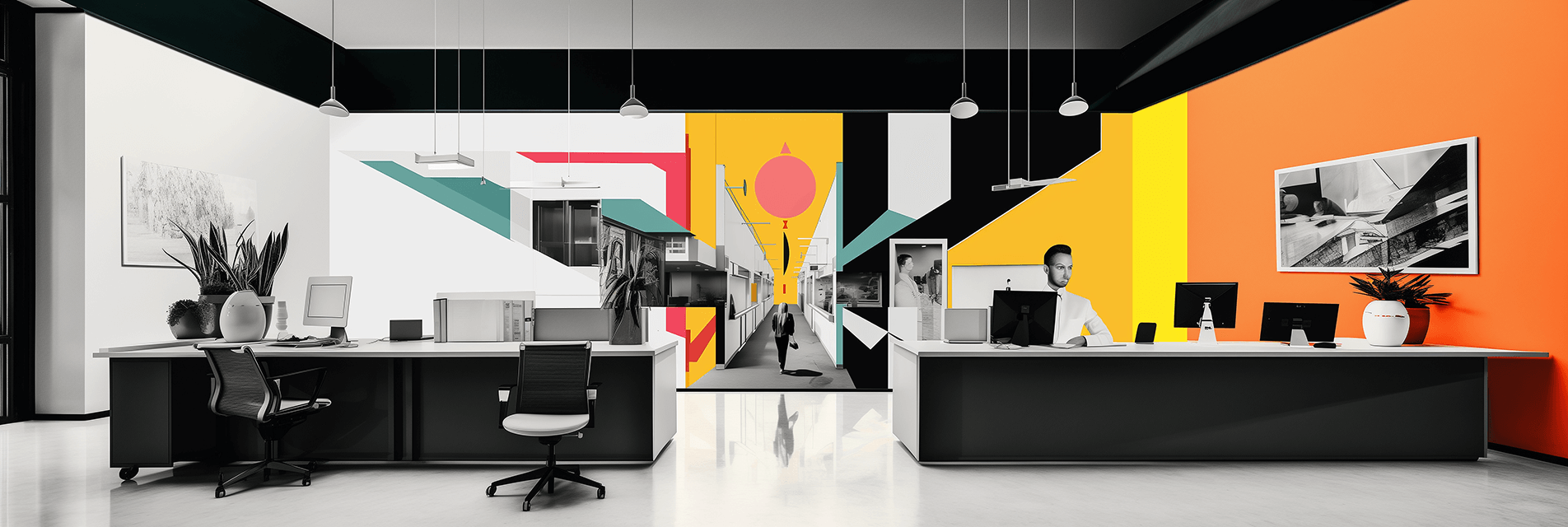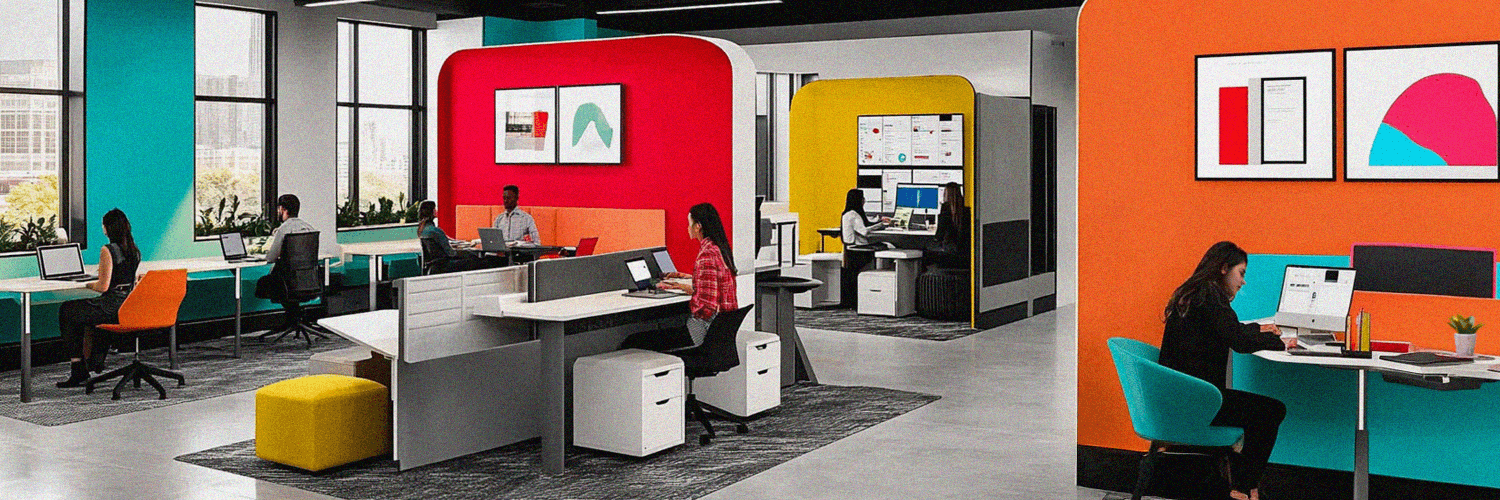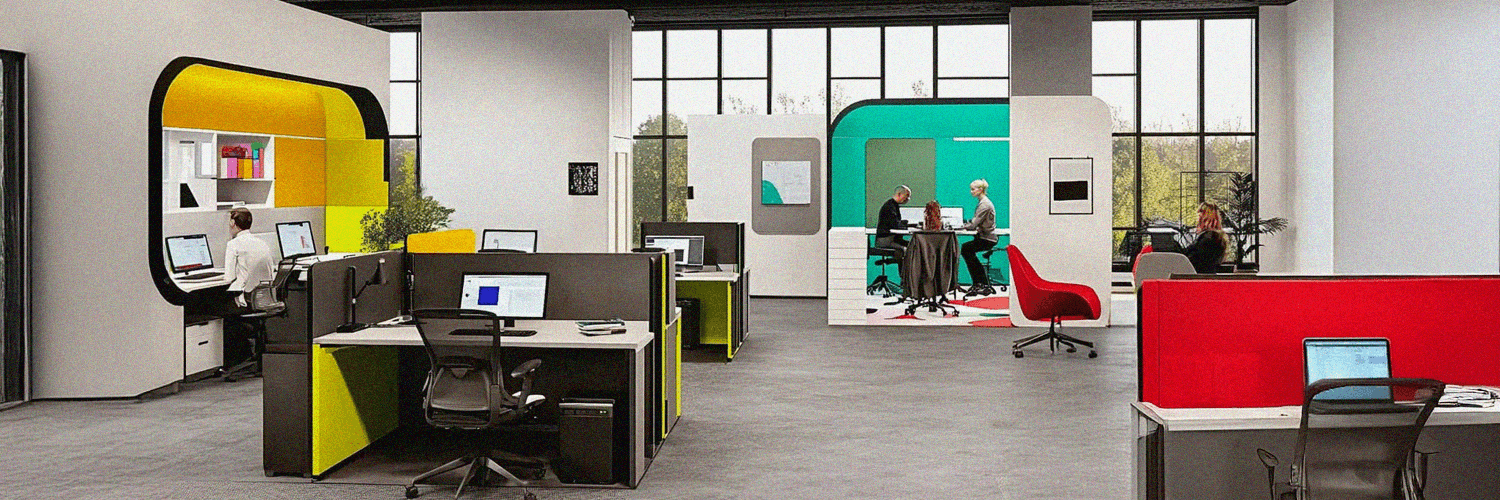Office wayfinding is an underrated yet crucial aspect of modern workplace design that enhances productivity and user experiences. If you've ever been lost in a maze-like office building or found yourself circling the floor looking for a particular department, then you'll appreciate the significance of this concept.
This article will illuminate what office wayfinding is, how it can dramatically improve your office space and key strategies for successful implementation. Whether you're navigating a large corporate hub or aiming to enhance your workspace, grasping the essentials of office wayfinding is the key to creating an efficient work environment. Ready to dive in?
TL;DR:
- Office wayfinding enhances productivity and user experiences in modern workplace design.
- Key elements of office wayfinding include signage, graphics, color coding, and office maps.
- Efficient wayfinding reduces confusion, increases accessibility, and improves workplace safety and security.
- A well-designed system contributes to a positive brand image, leaving lasting impressions on clients and partners.
- Interactive wayfinding solutions, like touch screens and augmented reality, provide a more engaging approach.
- Implementing a successful wayfinding system requires understanding user needs, consistency in branding, strategic placement, and continuous testing and evaluation.
What Is Office Wayfinding?
Office wayfinding refers to the systems put in place within an office space designed to easily guide employees, visitors, or clients from one area to another. It ensures individuals can find their destination without frustration or unnecessary delays—resulting in a highly efficient work environment.
Office wayfinding encompasses everything from physical elements like signs and color codes to interactive digital signage systems to designs embedded into the architectural construct, such as lighting or layout choices. Integrating these elements seamlessly provides an intuitive navigation system that makes life easier for everyone within the workspace and subconsciously communicates your company's professional ethos.
Mastering office wayfinding is crucial in today's open offices and flexible workspaces. It ensures that regardless of how dynamic an office is, anyone entering can navigate it comfortably. This is essential for creating positive first impressions on potential recruits attending interviews or high-profile clients coming for meetings.
So, the next time you're reassessing your workspace or considering a redesign, prioritize office wayfinding. Ensuring seamless navigation in and around your workspace can be a simple yet effective way to foster a more positive and productive atmosphere!
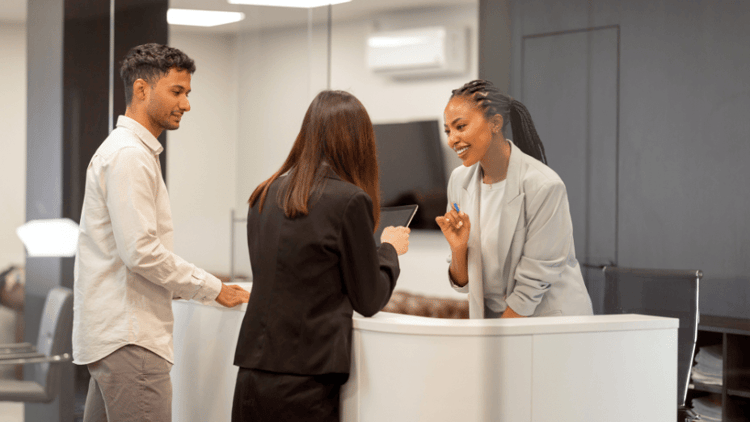
How Office Wayfinding Can Improve Your Workplace?
If you enter an office and feel lost, it's a clear sign that the establishment lacks efficient wayfinding. An effective office wayfinding system can offer myriad benefits to the workplace, significantly increasing efficiency and productivity.
Less Confusion
Firstly, well-executed wayfinding reduces confusion. Offices often have many interconnected spaces: conference rooms, personal cubicles, pantries, lavatories… Navigating these spaces can quickly become daunting and confusing for first-timers or visitors—appropriate signage marking various zones aids in reducing this disarray. With everyone knowing exactly where they need to go, time otherwise wasted wandering around aimlessly is saved.
More Accessibility
An effective office wayfinding strategy is pivotal in facilitating accessibility within the workplace. Using strategically placed signage, intuitive floor plans, and user-friendly navigation systems, employees, visitors, and individuals with varying mobility or sensory needs can quickly locate essential areas like meeting rooms, restrooms, and communal spaces.
Improved Workplace Safety & Security
Another advantage concerns enhancing workplace safety and security. Large offices may be equipped with emergency exits, fire extinguishers, or first aid kits; however, they become futile resources without proper direction leading toward them during crises. Hence, displaying strategic signs indicating safety points becomes paramount under office wayfinding.
Better Brand Image
Finally, a carefully tailored office wayfinding system serves as a silent ambassador for brand image by creating a positive and organized environment. Clear signage, strategically placed within the office, not only facilitates smooth navigation for employees and visitors but also conveys a sense of professionalism and efficiency. A well-designed and easily navigable workspace leaves a lasting impression on clients, potential hires, and business partners.
Key Elements of Office Wayfinding
What makes an office wayfinding system effective, engaging, and, above all else, helpful? Four essential components, such as signage and graphics, play a significant role in reaching these goals. Let's delve deeper into them.
Signage: Providing Clear and Concise Navigation
Clear digital signage is a cornerstone of successful office wayfinding, and it goes by various names, such as office directional signage or wayfinding signs. These visual cues play a crucial role in guiding individuals through the intricacies of your workplace, ensuring efficient navigation and minimizing confusion. By strategically placing these signposts, ranging from directing individuals to conference halls and restrooms to highlighting emergency exits, you create a seamlessly navigable environment.
The primary objective of these signs is to offer concise yet informative guidance, striking a balance that is neither overwhelming nor lacking in detail. For instance, a strategically positioned arrow pointing towards a staircase accompanied by a simple 'To Floor 2' fulfills its purpose effectively and adds a touch of subtlety and eloquence to the overall wayfinding experience within your office premises. Therefore, investing in clear and well-designed wayfinding signage contributes significantly to the functionality and professionalism of the workplace.
Graphics: Enhancing Visual Communication
Graphics is another pivotal element within contemporary office wayfinding systems, which is crucial in enhancing navigation and user experience. In modern office spaces, custom wayfinding signage is often adorned with intuitive symbols and pictograms, presenting a visually engaging alternative to textual directions that transcend language barriers. While clear text directions are valuable, well-designed visual cues, such as universally recognized symbols depicting elevators or stairs, provide an additional layer of immediate clarity.
Graphics are not just about making things look good; they also make the office more inclusive for people who speak different languages and help everyone understand directions faster without losing clarity. By using these visual elements, businesses can achieve two goals: create a more inclusive environment and ensure that people can quickly grasp information, ultimately improving the efficiency and accessibility of their office.
Color Coding: Simplifying Identification and Orientation
Color coding, often underestimated, emerges as a remarkably potent tool in improving corporate navigation accuracy. Leveraging the psychology of color memory, which allows our brains to recall colors more rapidly, it serves as a catalyst for quick identification and orientation within complex buildings. By assigning distinct colors to specific zones, such as using blue for administration sections or yellow for manufacturing divisions, employees can swiftly locate themselves in multi-story or expansive complexes.
The effectiveness of color coding goes beyond merely differentiating areas; it plays a significant role in reinforcing visual brand identity. As employees associate specific colors with designated zones, a subtle yet powerful connection is established between the visual cues and the organizational structure, contributing not only to efficient navigation but also to a cohesive and visually unified representation of the company's brand identity within its physical space.
Office Maps: Enhancing Navigation Accuracy
Interactive office maps play a pivotal role in enhancing navigation accuracy within the context of office wayfinding, offering a streamlined and efficient solution for employees and visitors alike. By integrating cutting-edge technology, such as indoor positioning systems and real-time data updates, these maps empower users to navigate complex office environments easily. Whether locating meeting rooms, common areas, or even the people inside the office, the precision of office maps ensures that individuals can optimize their routes, saving time and minimizing confusion.
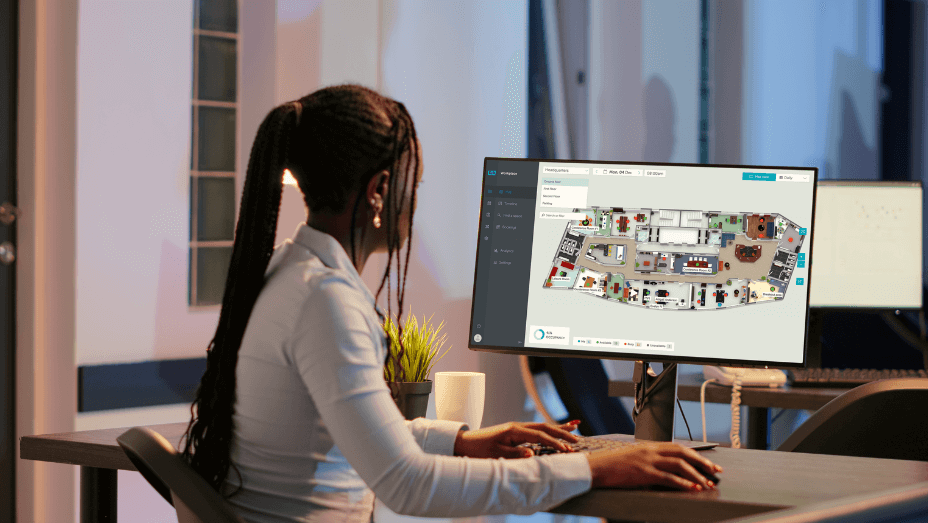
Additionally, these maps can be accessed through mobile applications, providing a user-friendly interface that aligns with modern workplace dynamics. The synergy of digital mapping and space booking technology, such as Yarooms Workplace Management Platform, simplifies the daily commute within office spaces and contributes to a more productive and organized work environment.
Implementing a Successful Wayfinding System
Implementing a successful wayfinding system can be a complex process. Let's break it down into more manageable steps.
Understanding User Needs and Expectations
To improve office navigation, it's crucial to consider the diverse needs of users. This includes returning employees, first-time visitors, and new hires, each with unique perspectives and familiarity with the office layout. Tailoring wayfinding systems to accommodate these differences is critical for effectiveness.
Additionally, it's important to remember that various individuals, from partners to suppliers, will interact with the navigation systems. Designing systems that cater to this diversity contributes to an enhanced overall user experience within the office space. Therefore, gathering feedback from stakeholders before implementing new plans, especially for directional or custom office signage, is essential for success.
Consistency and Branding in Messaging
Consistency and branding are essential when implementing an office wayfinding system. Ensuring uniformity in language, design elements, and visual cues creates a cohesive and recognizable user experience. Clear guidelines should be established to achieve this, defining standardized principles for design, color, fonts, and language that align with the organization's overall brand identity.
Integrating these branding elements into physical aspects, such as signage and maps, reinforces the company's identity, promoting a seamless and visually cohesive environment that enhances the overall wayfinding experience.
Placement and Visibility Considerations
Next in line are the aspects of placement and visibility, crucial for an effective office wayfinding system. It's imperative to strategically position directional signs where choices need to be made, such as crossroads or before changes in direction, to optimize their impact on guiding movement throughout the office space.
Equally significant is visibility—no matter how well-designed, signs are futile if not seen. Ensure signs are easily visible from a distance, free from obstructions like plants or furniture, and well-lit for clarity. To promote inclusivity, incorporate accessible signs at wheelchair-usable heights, braille translations, or sign language icons into your office wayfinding strategies. These thoughtful considerations enhance the wayfinding system's functionality and inclusiveness within the office environment.
Testing and Evaluation
The final step involves testing and evaluation, using pilot trials to simulate real-world scenarios and detect potential issues before full implementation. Continuous post-implementation feedback is crucial for ongoing improvement. Regular evaluation, supported by studies emphasizing its importance, ensures efficient navigation systems. Fostering open communication within the organization is critical for gathering valuable insights.
Let's wrap up: you can create an effective office wayfinding system by understanding user needs, maintaining branding consistency, strategically placing signs, ensuring visibility, and embracing continuous testing and evaluation. This not only enhances productivity but also enriches your organization's brand identity.
Final Thoughts: Maximizing Efficiency through Office Wayfinding
Artfully planned and well-executed office wayfinding has a profound impact on the workspace. It goes beyond helping individuals navigate an area, enhancing efficiency, optimizing productivity, and promoting an intuitive understanding of the workspace.
Remember how easily confused and disoriented you felt in a new workplace or massive multi-story building? With adequate office wayfinding strategies in place - including clear signage, coherent graphics, smart color coding, and detailed office maps - this feeling of being lost can be alleviated effectively.
Investments like digital signage have far-reaching implications for modern workplaces, too. They add dynamism – updating visitor experiences with interactive solutions and engaging content. Implementing these advanced technologies elevates the user experience to new heights. The process involves:
- Closely understanding user needs.
- Focusing on consistent branding messages in your signage design/placement.
- Testing how well your strategy lands upon execution.
Yet, despite its many benefits, one should not overlook the potential complexities of crafting effective wayfinding systems. Considerable thought must go into strategizing its implementation- experimenting with what works best for your unique workplace environment before deploying it across all offices could prove fruitful.
When executed right, though, there's no doubt about the significant contribution that efficient office wayfinding brings to daily operations - benefitting not just navigating guests but, more importantly, giving resounding positive impacts on staff morale & productivity levels—ultimately leading towards driving maximum organizational efficiency.
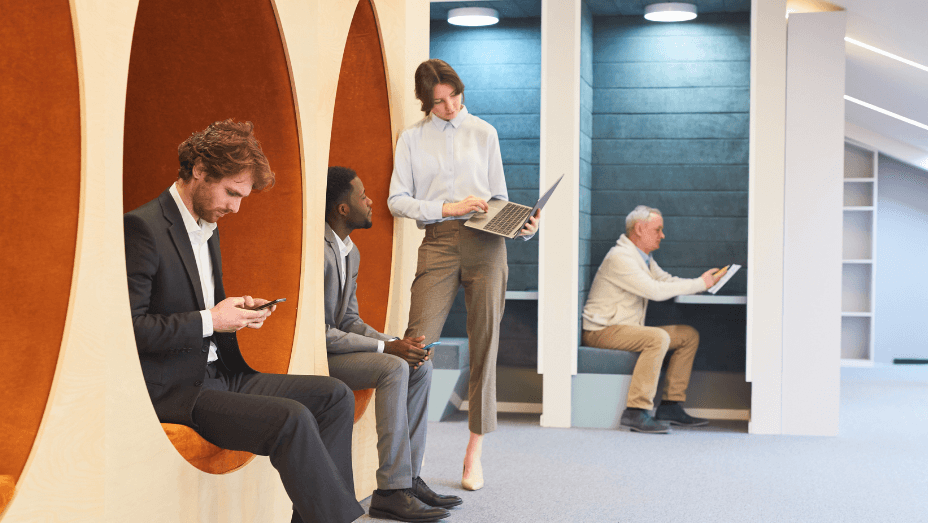
Office Wayfinding: FAQs
For any lingering questions you might have related to office wayfinding, this FAQ section following will attempt to quench your curiosity.
What Are the 4 Types of Wayfinding Signage?
Wayfinding signage comes in many forms, each serving a specific purpose within an office environment. However, fundamentally, there are four prime categories:
- Identification signs: These state the name or function of a room or space, making it easier for users to confirm their whereabouts
- Directional signs: They guide individuals toward their destination by providing navigation cues.
- Informational signs: Supplying valuable data (like instructions or rules) contributes to understanding the surroundings better.
- Regulatory signs: Principally, these inform what actions are permitted or restricted in a particular area.
By harmonizing all four types of signals within your workplace environment, you ensure an efficient and more pleasant navigating experience.
What Is the Purpose of Wayfinding?
The purpose of wayfinding is to ensure easy and efficient navigation within a space, enhancing operational efficiency, improving productivity, and providing a positive user experience. Key objectives include minimizing confusion, optimizing accessibility for diverse needs, and reinforcing brand identity. Office wayfinding also contributes to safety and security by directing individuals during emergencies and adapting to the requirements of modern workspaces. It involves implementing systems such as clear signage, graphics, color coding, and maps to guide individuals effectively, ultimately creating a well-organized and user-friendly work environment.
What Is the Difference between Signage and Wayfinding?
Though often used interchangeably, some differences distinguish wayfinding from mere signage. Signage constitutes only part of the entire system known as wayfinding. It refers to physical visual graphics—think signs or markers—that deliver information. On its own, though helpful—it only communicates partial information.
Conversely, wayfinding is a comprehensive approach designed for seamless navigation within complex built environments like offices. It integrates mapping systems and architectural elements alongside signage to empower occupants with instinctive orientation and progression toward their desired locations.
What Is the Meaning of Wayfinding in Business?
In business, "wayfinding" means more than directional assistance; it extends beyond simple guidance. Office wayfinding goes beyond that, creating an intuitive environment aligned with your brand's language. It guides visitors and employees, reducing confusion, boosting operational efficiency and productivity, and enhancing the user experience. In essence, wayfinding minimizes navigation barriers, allowing businesses to perform at their best.
